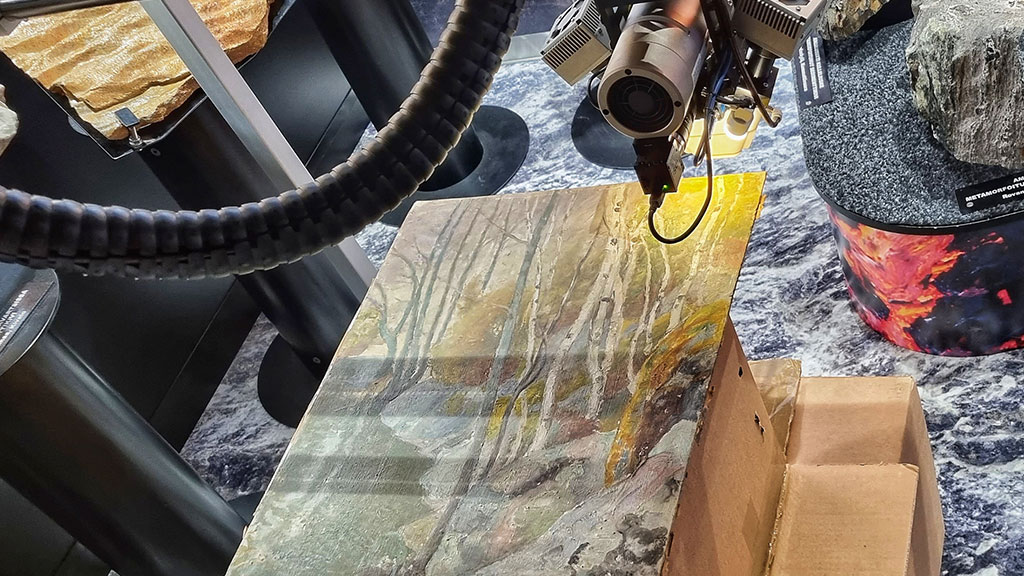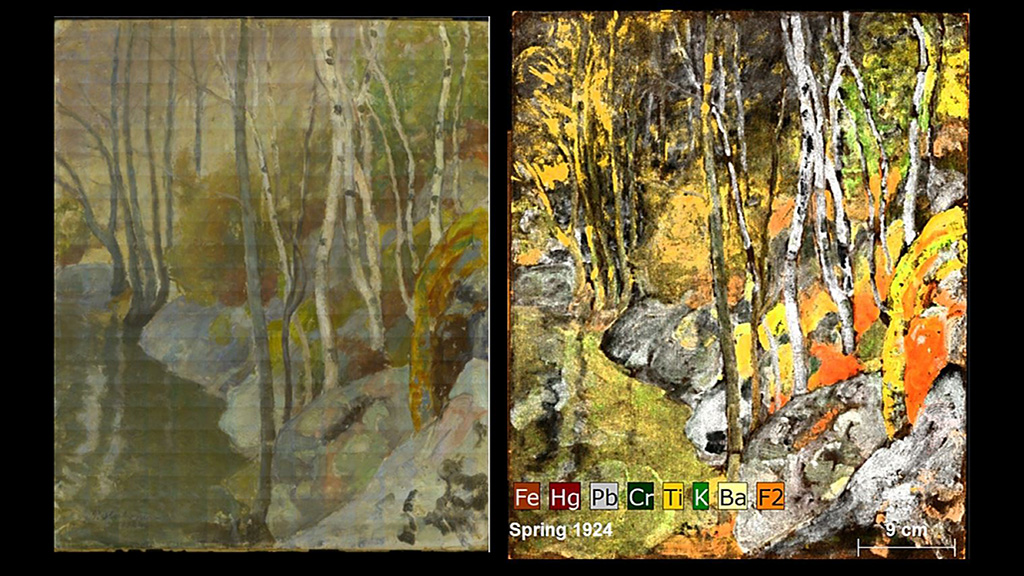The Tale of Pekka Halonen’s Paintings – What We Found Out Using Micro-XRF Scanning
Two original oil paintings by Pekka Halonen (Halosenniemi Museum) were scanned at Geological Survey of Finland’s (GTK) facilities in August 2022. The results of the Micro-XRF scan were analysed to find out which colours have been used in the paintings and where they come from.

Two of artist Pekka Halonen’s paintings Moonlight (1912) and Spring (1924) were scanned at GTK using novel x-ray micro-XRF techniques provided by Bruker Nano Technology. The micro-XRF scanner provides us directly with high resolution scans, the distribution of chemical elements and the element concentrations on the surface of the paintings. The scanning is a part of the Painting with Minerals project.
The scanning results revealed the micro-chemical composition of the pigments used by the artist Pekka Halonen. It turned out that Halonen used a wide range of paints and pigments: lead white, zinc white, titanium white, chromium green, cobalt blue, lead blue etc.
Certain objects include similar paints: rocks have been painted in mercury and iron, sky contains lead blue and birch tree trunks were painted using lead white. The scanning revealed also damages of the painting fixed with calcium in-filling.
Especially in Kevät (Spring) Halonen’s complex use of different paints and pigments is clearly shown.

Earlier in the project GTK researchers reviewed oil paint tubes and pieces of paint and found at the Halosenniemi museum. One interesting finding was that the salmon pink colour Pekka Halonen used consisted in part of fossils. The pigment in the paint includes crushed chalkstone, which contains fossils – coccoliths – that lived 100 million years ago.
Further in-depth analysis of the latest scanning results is still on-going. There will more interesting facts to be released in future.
Read the whole story of scanning operation and the first results of the analysis (PDF).
The presentation summarises the main findings, highlights and activities during the two days.
Additional information
Alan R. Butcher
Research Professor, GTK
+358 29 503 2240, alan.butcher@gtk.fi
Sari Lukkari
Senior Scientist, GTK
+358 29 503 2337, sari.lukkari@gtk.fi
